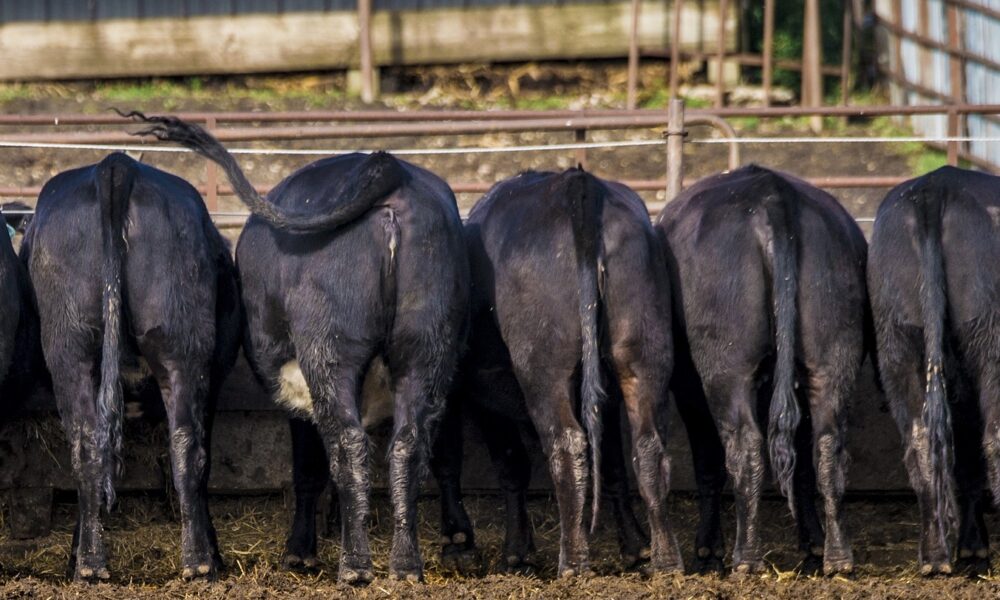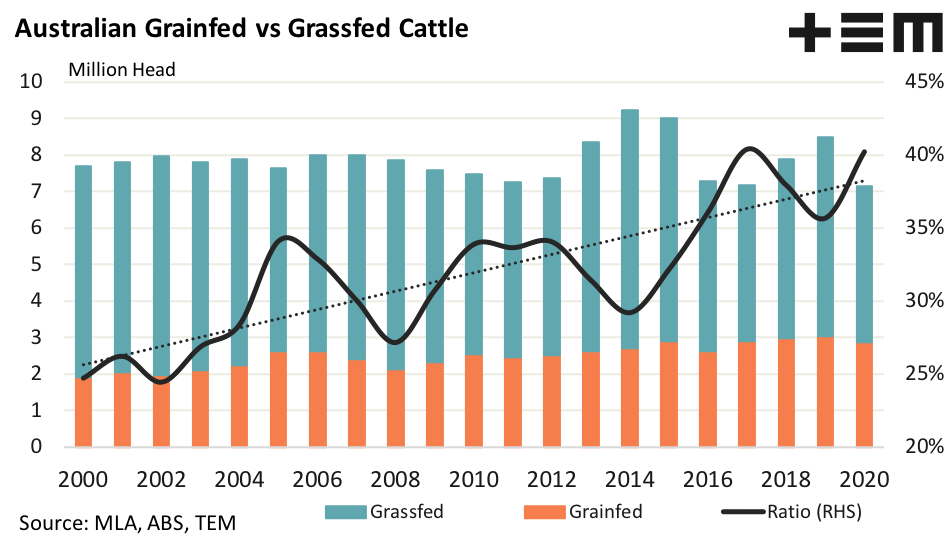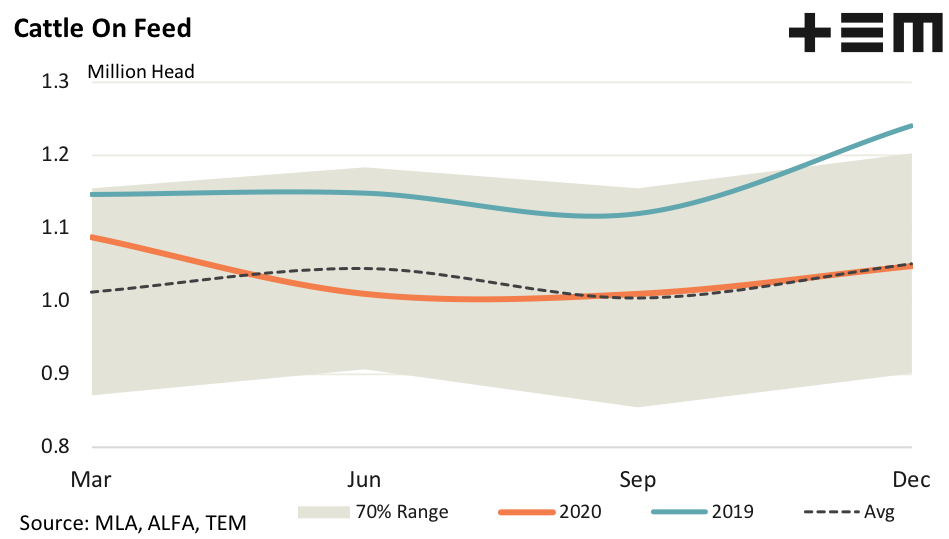Food for thought

The Snapshot
- The December quarter cattle on feed numbers posted a 4% increase to see feedlot volumes reach toward 1.05 million had over the final quarter of 2020.
- Annual turnoff of grain-fed cattle came in at 2.87 million head for 2020, which represents 40.2% of total cattle slaughter for the year and the second highest level this ratio has achieved on record.
- Cattle feedlot capacity was calculated at 1.44 million head at the end of 2020, so the current number of cattle on feed represents a national utilisation of 72.5%.
The Detail
Meat and Livestock Australia (MLA) have released their December quarter cattle on feed report and the data shows a 4% increase to national cattle on feed numbers over the final quarter of 2020. Cattle on feed averaged 1.04 million head for the 2020 season, but the quarter four numbers saw feedlot volumes increase to nearly 1.05 million head, the highest it has been since March 2020.
Annual turnoff of grain-fed cattle came in at 2.87 million head for 2020, which represents 40.2% of total cattle slaughter for the year. This is the highest proportion of grain-fed slaughter since 2017 when the ratio hit a record of 40.4%. The last two decades have seen a steady increase in the proportion of grain-fed cattle as a percentage of total annual slaughter, moving from 25% in the early 2000s to 40% in 2020.
The high proportion of grain-fed cattle in annual slaughter figures comes at a time when current utilisation rates show spare capacity in the nation’s feedlot sector. Indeed, cattle feedlot capacity is calculated at 1.44 million head, so the current number of cattle on feed represents a national utilisation of 72.5%, a stark contrast from the 89.8% seen at the end of December in 2019.
Queensland holds the bulk of the nation’s cattle on feed, at 56%, and the spare capacity is even greater here with the utilisation rate in Queensland coming in at 70.9% for the December 2020 quarter.
The seasonal trend for cattle on feed, on a quarterly basis, shows that the increase in numbers from September to December has seen feedlot numbers settle very closely to the five-year average trend for the final quarter of the year. At 1,048,305 head the number of cattle on feed is just a whisker under the 1,051,396 million head December quarter average recorded over the last five years.
While cattle numbers are sitting at average seasonal levels, the same cannot be said for cattle feedlot marketings. Marketings eased nearly 3% over the final quarter of 2020 to see just under 0.65 million head turned-off. This represents levels that are 9.5% under the five-year trend for this time in the season.
Considering the availability of pasture, particularly across much of the eastern seaboard, it is a good signal of confidence in the feedlot sector to see that numbers have been maintained to the end of 2020 and that grain-fed cattle continue to capture a large proportion of the annual slaughter.
Once the restocker frenzy begins to abate and feeder prices soften there will be ample capacity to see numbers on feed and feedlot marketings climb. Increased climate variability and the potential for more regular and prolonged periods of drought will continue to encourage cattle into feedlots, despite the fact that these periods are also associated with higher feed prices.
Being able to reliably supply key export destinations with premium grain-fed Aussie beef will likely push the cattle sector to take more and more control over their production systems, so the chance that grain-fed beef turnoff as a proportion of total slaughter heads towards 45-50% in the coming decade is fairly high.




